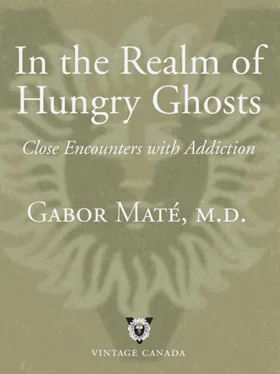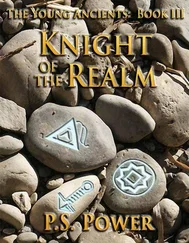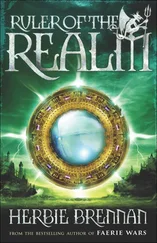I chuckle inwardly: my ego’s yearning to be recognized, and the fear of it, realized at the last possible moment.

PART III

A Different State of the Brain
Recent brain imaging studies have revealed an underlying disruption to brain regions that are important for the normal processes of motivation, reward and inhibitory control in addicted individuals. This provides the basis for a different view: that drug addiction is a disease of the brain, and the associated abnormal behavior is the result of dysfunction of brain tissue, just as cardiac insufficiency is a disease of the heart.
DR. NORA VOLKOW
DIRECTOR, [U.S.] NATIONAL INSTITUTE ON DRUG ABUSE
CHAPTER 11

What Is Addiction?
Addicts and addictions are part of our cultural landscape and lexicon. We all know who and what they are—or think we do. In this section of the book we’ll look at the subject from a scientific perspective, beginning with a working definition of addiction. We also need to dispel some common misconceptions.
In the English language addiction has two overlapping but distinct meanings. In our day, it most commonly refers to a dysfunctional dependence on drugs or on behaviours such as gambling or sex or eating. Surprisingly, that meaning is only about a hundred years old. For centuries before then, at least back to Shakespeare, addiction referred simply to an activity that one was passionate about or committed to, gave one’s time to. “Sir, what sciences have you addicted yourself to,” someone asks the knight Don Quixote in an eighteenth-century English translation of the Cervantes classic. In the nineteenth-century Confessions of an English Opium Eater, Thomas De Quincey never once refers to his narcotic habit as an addiction, even if by our current definition it certainly was. The pathological sense of the word arose in the early twentieth century.
The term’s original root comes from the Latin addicere, “assign to.” *11That yields the word’s traditional, innocuous meaning: a habitual activity or interest, often with a positive purpose. The Victorian-era British politician William Gladstone wrote about “addiction to agricultural pursuits,” implying a perfectly admirable vocation. But the Romans had another, more ominous usage that speaks to our present-day interpretation: an addictus was a person who, having defaulted on a debt, was assigned to his creditor as a slave—hence, addiction’s modern sense as enslavement to a habit. De Quincey anticipated that meaning when he acknowledged “the chain of abject slavery” forged by his narcotic dependence.
What, then, is addiction? In the words of a consensus statement by addiction experts in 2001, addiction is a “chronic neurobiological disease… characterized by behaviors that include one or more of the following: impaired control over drug use, compulsive use, continued use despite harm, and craving.” 1The key features of substance addiction are the use of drugs or alcohol despite negative consequences, and relapse. I’ve heard some people shrug off their addictive tendencies by saying, for example, “I can’t be an alcoholic. I don’t drink that much…” or “I only drink at certain times.” The issue is not the quantity or even the frequency, but the impact. “An addict continues to use a drug when evidence strongly demonstrates the drug is doing significant harm…. If users show the pattern of preoccupation and compulsive use repeatedly over time with relapse, addiction can be identified.” 2
Helpful as such definitions are, we have to take a broader view to understand addiction fully. There is a fundamental addiction process that can express itself in many ways, through many different habits. The use of substances like heroin, cocaine, nicotine and alcohol are only the most obvious examples, the most laden with the risk of physiological and medical consequences. Many behavioural, nonsubstance addictions can also be highly destructive to physical health, psychological balance, and personal and social relationships.
Addiction is any repeated behaviour, substance-related or not, in which a person feels compelled to persist, regardless of its negative impact on his life and the lives of others. Addiction involves:
1. compulsive engagement with the behaviour, a preoccupation with it;
2. impaired control over the behaviour;
3. persistence or relapse, despite evidence of harm; and
4. dissatisfaction, irritability or intense craving when the object—be it a drug, activity or other goal—is not immediately available.
Compulsion, impaired control, persistence, irritability, relapse and craving—these are the hallmarks of addiction—any addiction. Not all harmful compulsions are addictions, though: an obsessive-compulsive, for example, also has impaired control and persists in a ritualized and psychologically debilitating behaviour such as, say, repeated hand washing. The difference is that he has no craving for it and, unlike the addict, he gets no kick out of his compulsion.
How does the addict know she has impaired control? Because she doesn’t stop the behaviour in spite of its ill effects. She makes promises to herself or others to quit, but despite pain, peril and promises, she keeps relapsing. There are exceptions, of course. Some addicts never recognize the harm their behaviours cause and never form resolutions to end them. They stay in denial and rationalization. Others openly accept the risk, resolving to live and die “my way.”
As we shall see shortly, all addictions—whether to drugs or to nondrug behaviours—share the same brain circuits and brain chemicals. On the biochemical level the purpose of all addictions is to create an altered physiological state in the brain. This can be achieved in many ways, drug taking being the most direct. So an addiction is never purely “psychological” all addictions have a biological dimension.
And here a word about dimensions. As we delve into the scientific research, we need to avoid the trap of believing that addiction can be reduced to the actions of brain chemicals or nerve circuits or any other kind of neurobiological, psychological or sociological data. A multilevel exploration is necessary because it’s impossible to understand addiction fully from any one perspective, no matter how accurate. Addiction is a complex condition, a complex interaction between human beings and their environment. We need to view it simultaneously from many different angles—or, at least, while examining it from one angle, we need to keep the others in mind. Addiction has biological, chemical, neurological, psychological, medical, emotional, social, political, economic and spiritual underpinnings—and perhaps others I haven’t thought about. To get anywhere near a complete picture we must keep shaking the kaleidoscope to see what other patterns emerge.

Because the addiction process is too multifaceted to be understood within any limited framework, my definition of addiction made no mention of “disease.” Viewing addiction as an illness, either acquired or inherited, narrows it down to a medical issue. It does have some of the features of illness, and these are most pronounced in hardcore drug addicts like the ones I work with in the Downtown Eastside. But not for a moment do I wish to promote the belief that the disease model by itself explains addiction or even that it’s the key to understanding what addiction is all about. Addiction is “all about” many things.
Читать дальше















